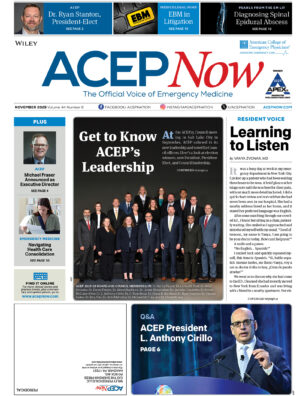Hospitals designated as trauma centers by the American College of Surgeons (ACS) have lower complication rates than non-ACS trauma centers, according to a retrospective review.
Dr. Michael D. Grossman from Hofstra-Northwell School of Medicine and Southside Hospital in Bayshore, New York and colleagues used data from the National Sample Program of the National Trauma Data Bank to compare complications and mortality, independent of volume, between ACS and non-ACS trauma centers in the U.S.
They divided patients into groups by age (pediatric, 0 to 14 years; adult, 15 to 64 years; and elderly, older than 65 years) and by Injury Severity Score (all injuries, ISS 9 to 74; major injuries, ISS 25 to 74).
Overall, mortality and complication rates did not differ between ACS and non-ACS centers. Among elderly patients, however, complications were 3.17-fold more likely in non-ACS centers, whereas statistically significant differences in mortality were likely not clinically significant, the authors reported on June 6 online in the Journal of the American College of Surgeons.
Similarly, for children, mortality rates were similar at ACS and non-ACS centers, but complications were 2.61-fold more likely in non-ACS centers. For adults with major trauma, death was 13 percent less likely in non-ACS trauma centers than in ACS trauma centers, with most of the difference attributable to death in the emergency department (5.2 percent at ACS centers versus 2.0 percent at non-ACS centers).
Mortality rates in children and the elderly with major trauma did not differ between ACS and non-ACS centers, but complications were significantly more likely in non-ACS centers for adult, elderly, and pediatric patients with major trauma.
“Although our study is limited by factors affecting large database analyses including missing data elements, lack of detail regarding causation of outcomes measures (death in the ED), and inability to accurately determine the effect of transfer status on outcomes, we believe it is possible to conclude that complications are more likely in non-ACS trauma centers at the extremes of age for patients with less severe injury and for all ages in patients with more severe injury,” the researchers write.
It’s not clear yet, they say, which standards, requirements, or clinical characteristics make the most difference with regard to outcome.
Dr. Joshua B. Brown from the University of Pittsburgh Medical Center in Pennsylvania, who recently examined the effect of geographic trauma system resource organization on fatal motor vehicle collisions, told Reuters Health by email, “I think the most interesting finding is that the benefit appears to be largely in the extremes of age. Our geriatric and pediatric patients have been shown to benefit from specialized trauma care, so a reduction in complications is a real opportunity to improve care in these vulnerable patient populations.”
“There may be a few reasons for the difference in ED mortality between ACS and non-ACS centers among severely injured patients,” he explained. “First, although all are severely injured, the expected mortality across the range of ISS 25 to 74 is approximately 10 percent to upwards of 80 percent or 90 percent. So it may be that ACS centers are seeing the higher end of the injury severity spectrum for those patients. Also, as the authors note, ACS verification establishes a significant minimum of resources across the spectrum of care, and those centers may be mobilizing and expending more resources in the initial resuscitation of patients in extremis, rather than declaring them dead on arrival.”
“The take home message is that trauma systems have become very good at keeping patients alive overall, and that we need to look at high-risk populations to further our pursuit of improving outcomes,” Dr. Brown said. “The ACS has set a high standard, and it will be these marginal populations where we can really make an impact through things like ACS verification to raise the bar on trauma care.”
Molly Jarman, a doctoral candidate at Johns Hopkins Bloomberg School of Public Health, Baltimore, Maryland, who has investigated geographic disparities in trauma mortality, told Reuters Health by email, “Hospitals can replicate ACS standards without completing the formal verification process, but an institution’s decision to seek ACS verification may indicate a culture of care at the hospital or state level that also prevents some complications.”
“Variability in trauma care services and the institutional culture may contribute to differences in complications and ACS and non-ACS centers,” she said.
Differences in patient populations at ACS and non-ACS centers may also contribute to differences in outcomes, she said, “especially if hospitals serving high risk communities are less likely to seek ACS verification.”
Jarman added, “Patients with serious injuries typically do not get to choose their trauma center. If variability in the quality of trauma center care disproportionately impacts vulnerable populations, it may contribute to disparities in injury mortality and long-term disability.”
Dr. Lynne Moore from Universite Laval, Quebec, Canada recently investigated the impact of trauma center designation level on outcomes following hemorrhagic shock. She told Reuters Health by email, “If observed differences are truly related to ACS-accreditation, the next step would be to acquire a better understanding of how the accreditation process influences trauma center structure and more so, processes of care; i.e. high use of effective clinical practices and low use of low-value clinical practices.”
“However,” she said, “as noted by the authors, results should be interpreted with caution. Firstly, the comparison group (non-ACS centers) is very heterogeneous. Non-ACS centers are state accredited. The state accreditation process is extremely variable . . . (and) observed differences may be due to differences in trauma care structure across states rather than between ACS and non-ACS centers.”
“A risk-adjusted comparison of hospital (and ICU) length-of-stay between ACS and non-ACS centers using competitive risk models to account for differences in mortality would have been really interesting,” Dr. Moore said. She also would have liked to see results stratified by injury type and complication type.
Dr. Grossman did not respond to a request for comments.
Pages: 1 2 3 | Multi-Page





No Responses to “ACS-Designated Trauma Centers have Fewer Complications at Extremes of Age”